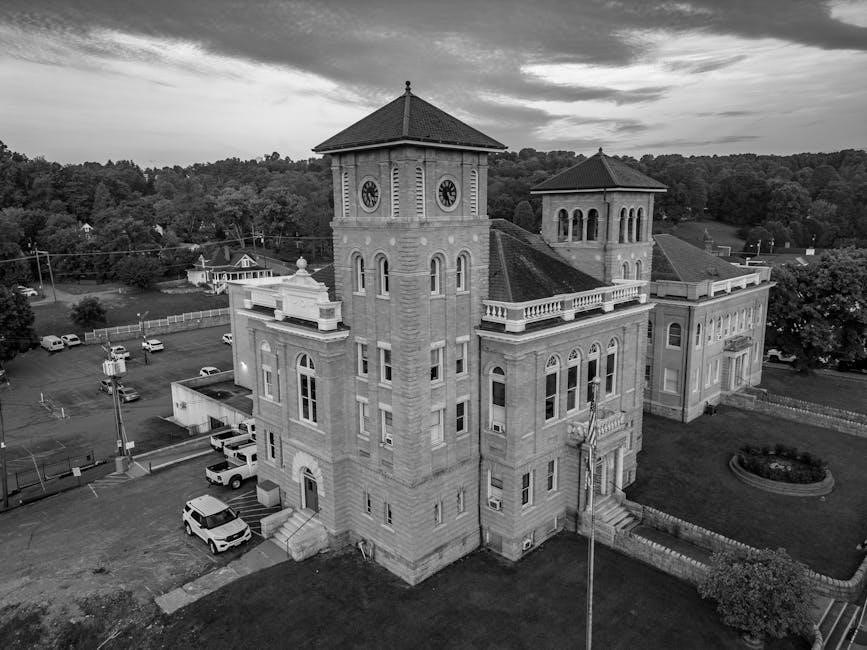Early Beginnings: The Transatlantic Slave Trade
The transatlantic slave trade began in the 15th century‚ with millions of Africans forcibly brought to the Americas. The first enslaved Africans arrived in Virginia in 1619‚ marking the start of slavery in British North America.
1.1 The Arrival of Africans in Virginia (1619)
In 1619‚ the first enslaved Africans arrived in Virginia‚ marking the beginning of the transatlantic slave trade in British North America. These individuals were brought to the English colony at Point Comfort‚ near present-day Hampton‚ Virginia‚ and were forcibly sold into labor. This event laid the foundation for the institution of slavery in the American colonies‚ profoundly shaping the course of Black history in the United States.
1.2 The Growth of Slavery in the American Colonies
By 1690‚ every American colony had enslaved Africans‚ marking the rapid expansion of slavery. The transition from indentured servitude to lifelong slavery solidified racial exploitation. Laws like Virginia’s 1662 act legalized hereditary slavery‚ perpetuating the system. Plantation economies reliant on tobacco‚ rice‚ and sugar drove demand‚ leading to the forced migration of millions‚ entrenching slavery as a cornerstone of colonial life and economy.

The Civil War and Reconstruction Era
The Civil War (1861-1865) led to the Emancipation Proclamation (1863) and the 13th Amendment (1865)‚ abolishing slavery and reshaping the nation’s trajectory for Black Americans.
2;1 The Emancipation Proclamation (1863)
Issued by President Abraham Lincoln on January 1‚ 1863‚ the Emancipation Proclamation declared freedom for enslaved people in Confederate states. While it didn’t immediately free all slaves‚ it paved the way for the eventual abolition of slavery with the 13th Amendment in 1865‚ marking a pivotal moment in Black history.

2.2 The 13th Amendment and the Abolition of Slavery (1865)
Ratified on December 6‚ 1865‚ the 13th Amendment abolished slavery throughout the United States. It marked the culmination of efforts to end the institution of slavery‚ following the Emancipation Proclamation. This amendment officially freed millions of enslaved African Americans‚ granting them recognition as citizens and laying the foundation for future civil rights advancements.
The Civil Rights Movement
The Civil Rights Movement (1950s-1960s) sought to end racial segregation and discrimination through nonviolent protests and legal challenges‚ culminating in landmark legislation like the Civil Rights Act of 1964.
3.1 The Montgomery Bus Boycott (1955)
The Montgomery Bus Boycott began after Rosa Parks’ arrest for refusing to give up her seat to a white person. Led by Dr. Martin Luther King Jr.‚ the 381-day boycott ended with the U.S. Supreme Court ruling that segregation on public buses was unconstitutional‚ marking a significant victory for the Civil Rights Movement.
3.2 The March on Washington and the “I Have a Dream” Speech (1963)
The March on Washington drew over 200‚000 people‚ where Dr. Martin Luther King Jr. delivered his iconic “I Have a Dream” speech. Advocating for racial equality and justice‚ the event became a pivotal moment in the Civil Rights Movement‚ leading to the passage of the Civil Rights Act in 1964 and inspiring future activism for decades.
Notable Figures in Black History
Carter G. Woodson‚ known as the father of Black History Month‚ and Martin Luther King Jr.‚ a leading civil rights activist‚ shaped African-American culture and history.
4.1 Carter G. Woodson: The Father of Black History Month
Carter G. Woodson‚ born to former slaves in 1875‚ became a pioneering historian and educator. He earned a Ph.D. from Harvard and founded the Journal of Negro History in 1916. Woodson is celebrated for establishing Negro History Week in 1926‚ which evolved into Black History Month. His work laid the foundation for recognizing African-American contributions to U.S. history and culture‚ ensuring their stories would never be forgotten.
4.2 Martin Luther King Jr. and His Role in the Civil Rights Movement
Martin Luther King Jr.‚ born in 1929‚ was a pivotal leader in the Civil Rights Movement. A Baptist minister and advocate for nonviolent resistance‚ he led the Montgomery Bus Boycott and delivered the iconic “I Have a Dream” speech during the 1963 March on Washington. His efforts were instrumental in the passage of the Civil Rights Act of 1964 and the Voting Rights Act of 1965. King’s legacy endures as a symbol of equality and justice‚ even after his assassination in 1968.
Black History in Education
Black history in education highlights milestones like the founding of Historically Black Colleges and Universities (HBCUs) and the 1954 Brown v. Board of Education ruling‚ ending segregation.
5.1 The Founding of Historically Black Colleges and Universities (HBCUs)
Historically Black Colleges and Universities (HBCUs) were established after the Civil War to provide education to African Americans. The first HBCU‚ Lincoln University‚ was founded in 1868‚ offering degrees in theology‚ law‚ and medicine. These institutions played a vital role in fostering Black intellectual and cultural growth‚ despite facing segregation and limited resources‚ becoming cornerstones of African-American education and empowerment.
5.2 The Integration of Schools Following Brown v. Board of Education (1954)
The landmark Supreme Court case Brown v. Board of Education declared segregation unconstitutional‚ mandating school integration. Despite resistance‚ this ruling paved the way for desegregation across the U.S.‚ fostering equality in education and transforming the lives of African-American students‚ though challenges persisted in achieving true integration and equity in schools nationwide.
Black Cultural Contributions
Black culture has profoundly shaped global art‚ music‚ and literature. The Harlem Renaissance and African-American literature are cornerstone contributions‚ celebrating identity and resilience through creative expression.
6.1 The Harlem Renaissance and Its Impact on African-American Culture
The Harlem Renaissance (1918–1937) was a cultural explosion in Harlem‚ New York‚ celebrating African-American identity through art‚ music‚ and literature. Figures like Langston Hughes and Zora Neale Hurston challenged racial stereotypes‚ fostering pride and unity. This movement reshaped African-American culture‚ leaving a lasting legacy in the arts and civil rights‚ inspiring future generations to embrace their heritage.
6.2 The Role of African-American Literature in Shaping Identity
African-American literature has been a powerful tool for self-expression and identity formation. Works by Langston Hughes‚ Zora Neale Hurston‚ and others celebrated Black culture‚ challenging racial stereotypes. This literature provided a voice for the community‚ fostering pride and resilience. It also preserved history‚ offering insights into the struggles and triumphs of Black Americans‚ thereby shaping their collective identity and inspiring future generations.

Black History in the United Kingdom
Black history in the UK traces back to Roman times‚ with evidence of African presence in Roman Britain. The Windrush Generation in the 1940s marked significant modern migration.
7.1 The Presence of Black People in Roman Britain
Archaeological evidence‚ including skeletal remains found in Roman burial sites like Leicester‚ indicates that people of African descent lived in Roman Britain during the 2nd to 4th centuries AD. While their exact roles are debated‚ they were likely part of the diverse population in urban centers‚ reflecting the vast reach of the Roman Empire.
7.2 The Windrush Generation and Modern Black British History
The Windrush Generation refers to the large-scale migration of Caribbean people to the UK after World War II‚ particularly aboard the HMT Empire Windrush in 1948. These individuals played a crucial role in rebuilding post-war Britain‚ contributing to industries like healthcare and transportation. Despite facing discrimination‚ they laid the foundation for modern Black British identity. Their legacy continues to shape discussions on race‚ immigration‚ and belonging in the UK today.

Contemporary Black History
Contemporary Black history highlights the election of Barack Obama as the first Black U.S. President in 2008 and the emergence of the Black Lives Matter movement‚ sparking global conversations on racial justice.
8.1 The Election of Barack Obama as the First Black President of the United States (2008)
Barack Obama’s historic 2008 election marked a pivotal moment in Black history‚ becoming the first African American President of the United States. His victory symbolized progress in racial equality and inspired hope globally‚ reflecting decades of civil rights efforts and paving the way for future generations of Black leaders in politics and beyond.
8.2 The Black Lives Matter Movement and Its Global Impact
The Black Lives Matter movement emerged in 2013‚ gaining momentum after high-profile cases of police violence against Black individuals. It sparked global protests‚ advocating for racial justice and systemic reform. The movement has influenced policy changes‚ cultural shifts‚ and international solidarity‚ becoming a defining force in modern civil rights history and a powerful symbol of the ongoing struggle for equality.

Black History Month and Its Significance
Black History Month‚ celebrated annually in February‚ honors the contributions and cultural heritage of Black individuals. Originating from Negro History Week in 1926‚ it evolved into a month-long celebration in 1986‚ recognizing the rich legacy and ongoing impact of Black history globally.
9.1 The Origins of Black History Month and Its Evolution
Black History Month traces its origins to Negro History Week‚ created in 1926 by Carter G. Woodson. Initially celebrated during the second week of February to coincide with Abraham Lincoln’s and Frederick Douglass’s birthdays‚ it expanded into a full month in 1986. This evolution reflects the growing recognition of the profound impact of Black history and culture worldwide.
9.2 Celebrating Black History Month Around the World
Black History Month is celebrated globally‚ with countries like Canada‚ the UK‚ and the Netherlands honoring the contributions of Black communities. In the UK‚ it is observed in October‚ featuring cultural events and educational programs. Canada highlights Black Canadian achievements‚ while Germany and other nations integrate discussions on diversity and inclusion. This global tribute underscores the universal impact of Black history and culture.

Resources for Further Exploration
Explore detailed timelines‚ educational materials‚ and historical documents to deepen your understanding of Black history. Key resources include PDF timelines‚ recommended reading lists‚ and documentaries.
10.1 Recommended PDF Timelines and Educational Materials

Downloadable PDF timelines‚ such as the African American History Timeline and Black British History Timeline‚ provide chronological insights into key events. Educational resources like the Black History 4 Schools pack offer lesson plans and activities for classroom use. Additionally‚ the Florida Black Heritage Trail and Historic Burlington County PDFs highlight regional contributions. These materials are essential for educators and learners seeking a comprehensive understanding of Black history.
10.2 Key Books and Documentaries on Black History
Essential books like Key Events in African History by Toyin Falola and The Black Presence by J. Walvin offer deep insights. Documentaries such as The African Americans: Many Rivers to Cross and Black History: A History in an Hour provide visual narratives. These resources‚ including works by Rupert Colley‚ are vital for understanding the rich tapestry of Black history and its cultural significance.